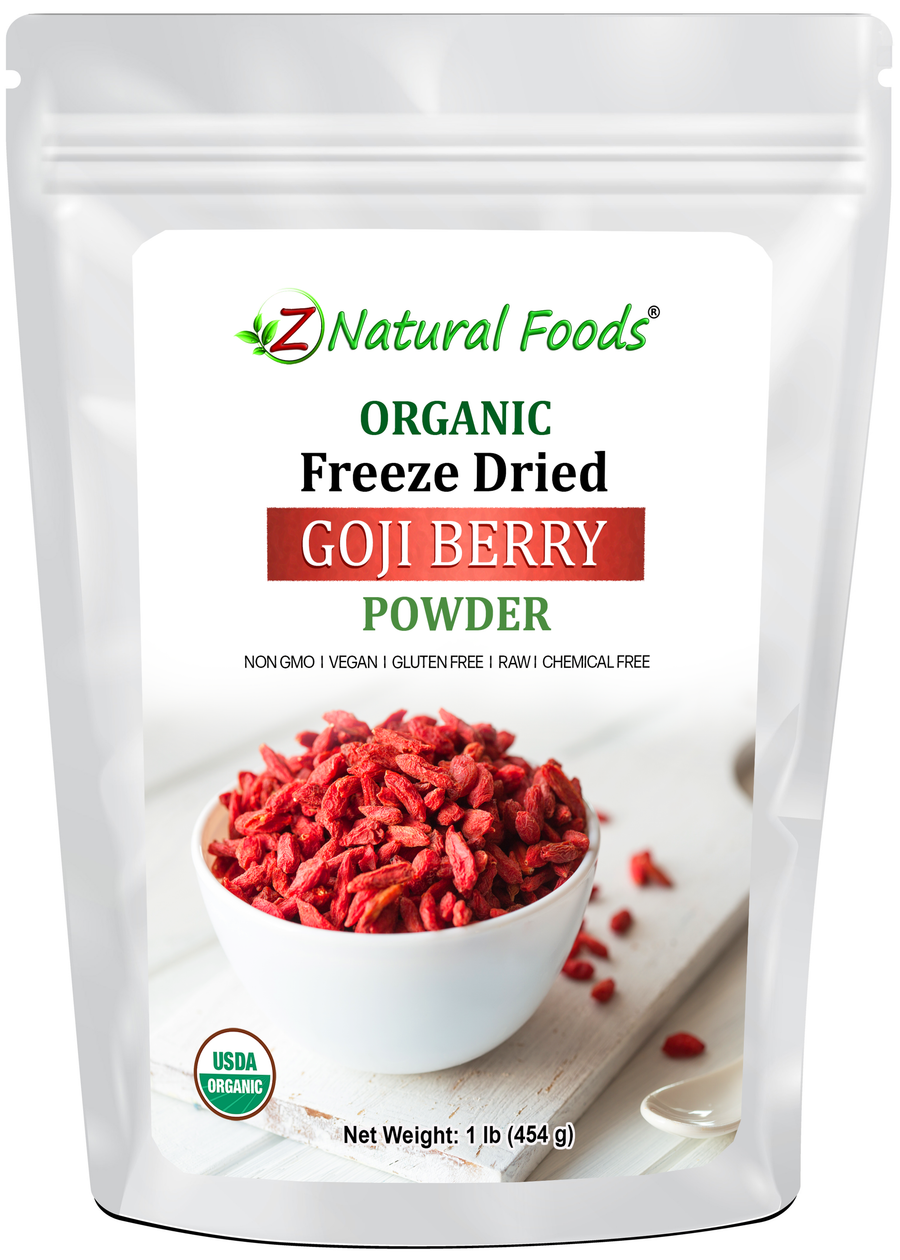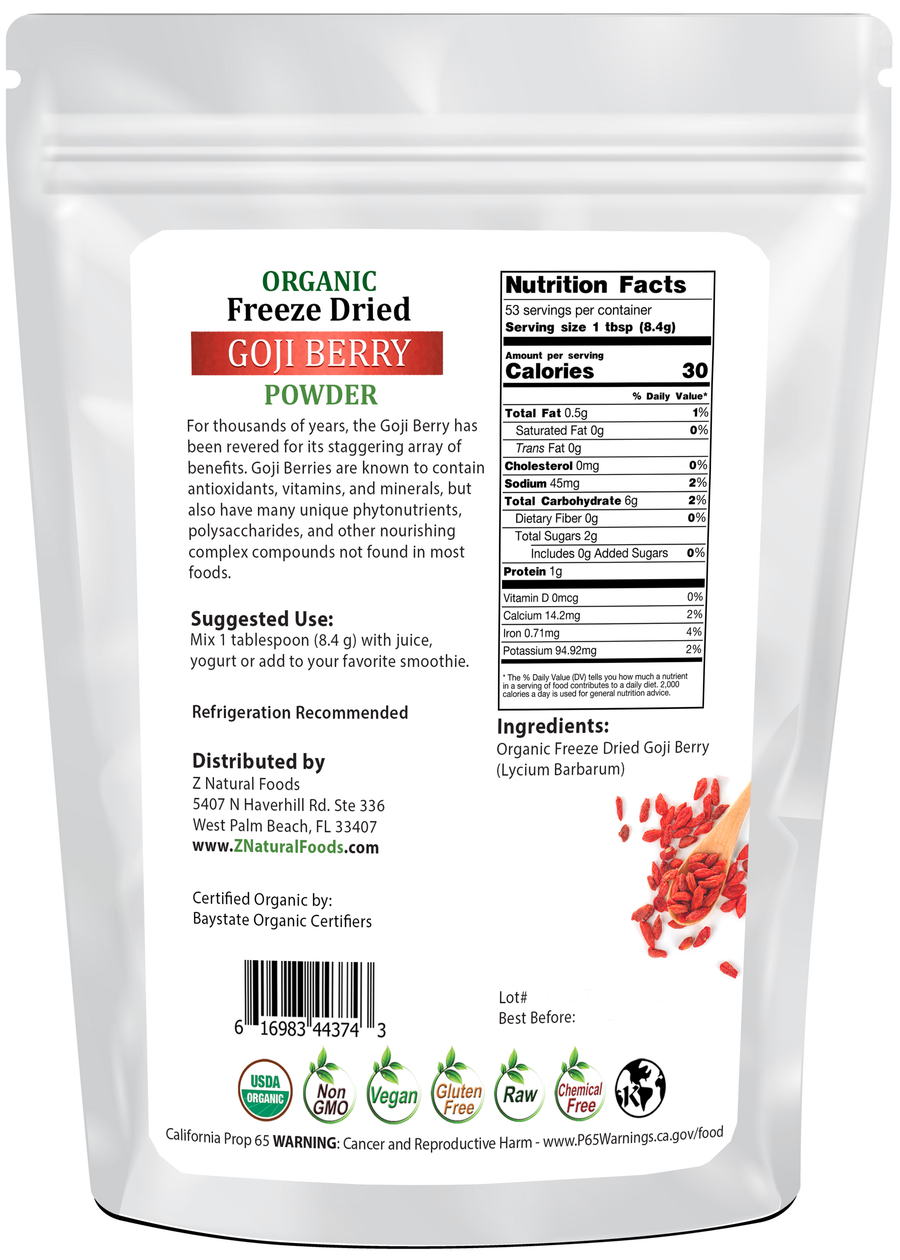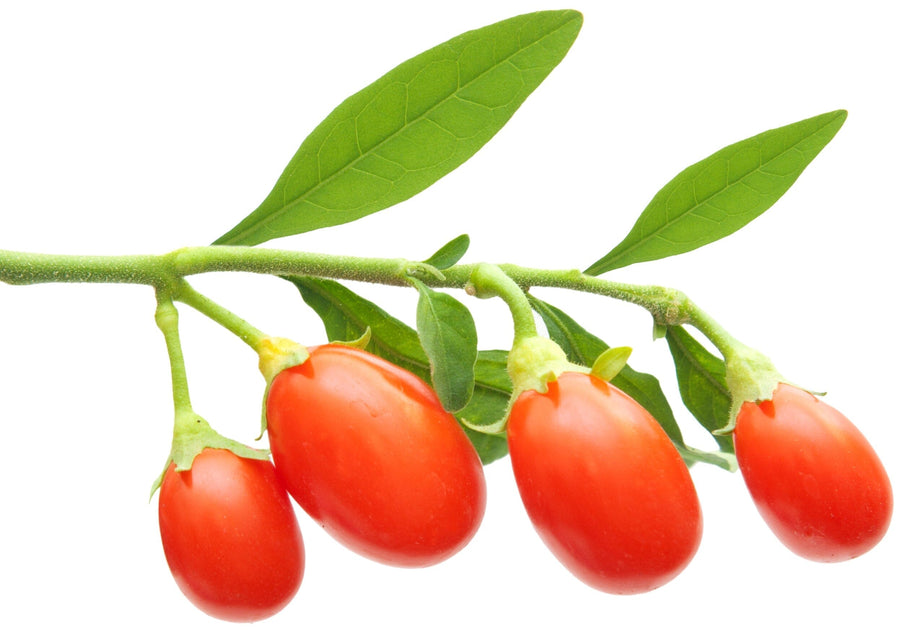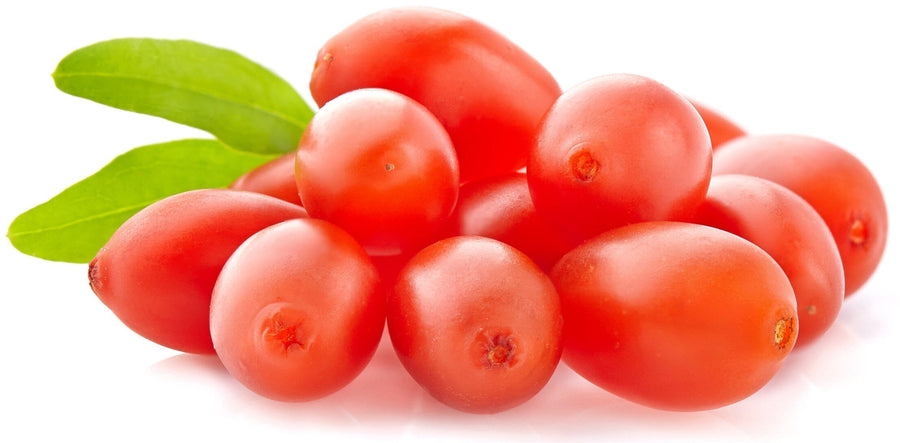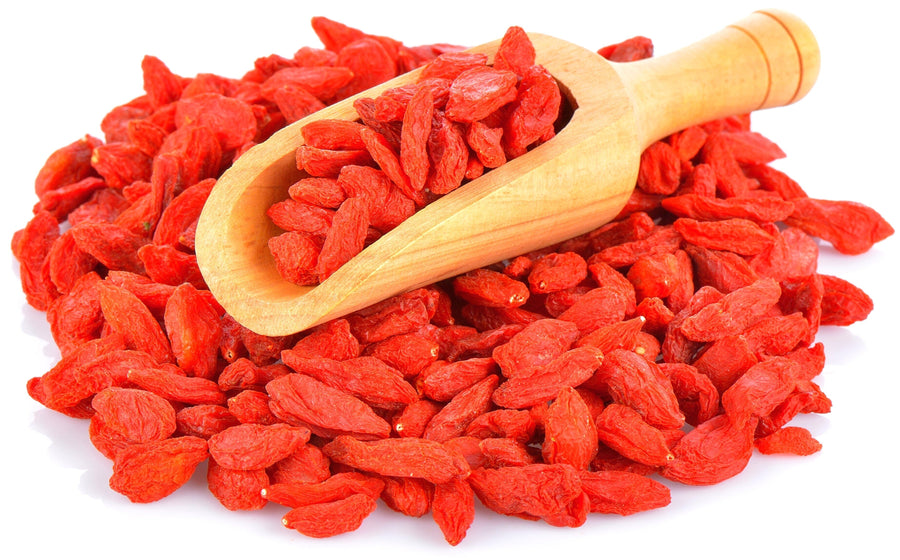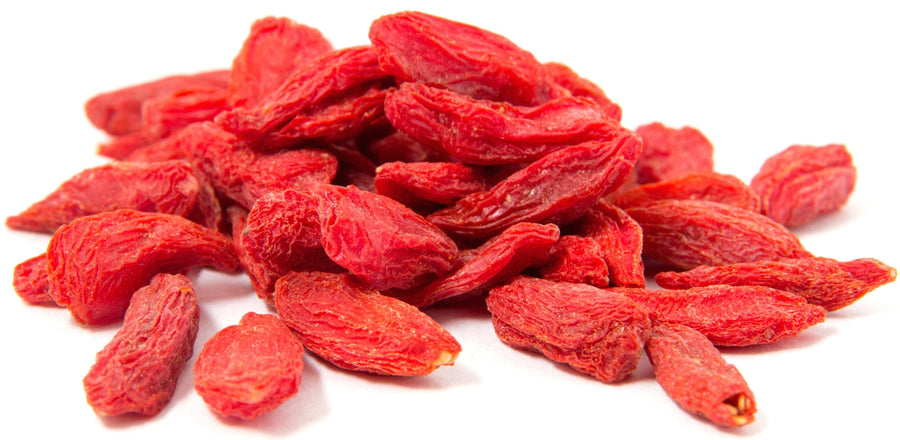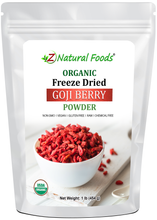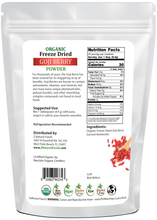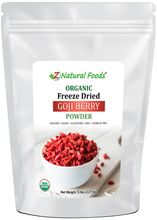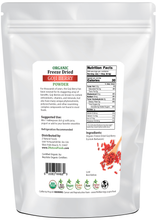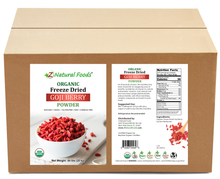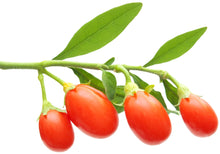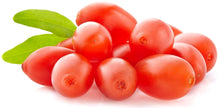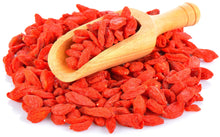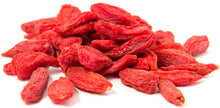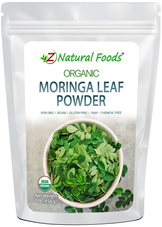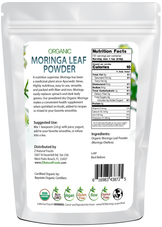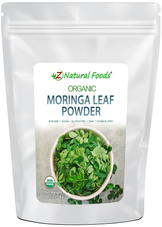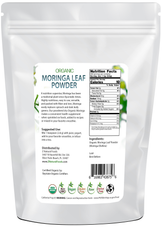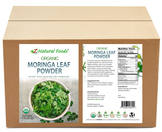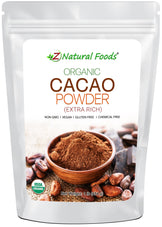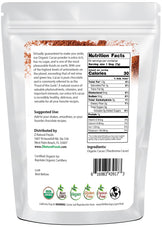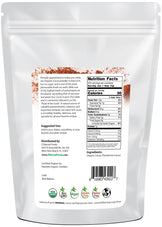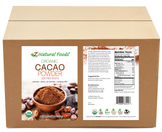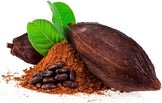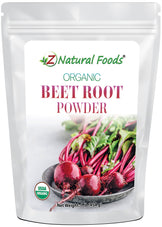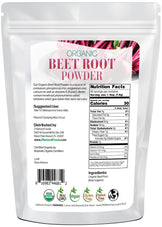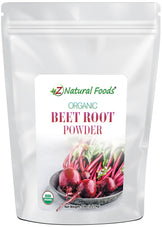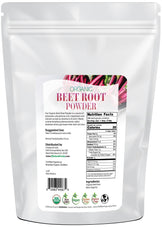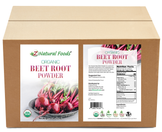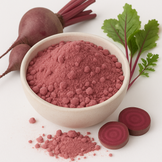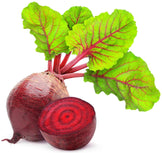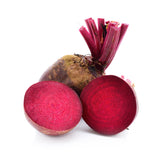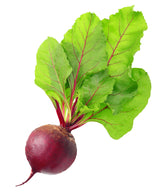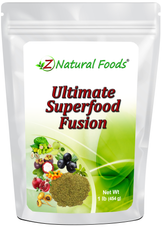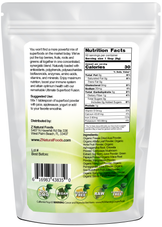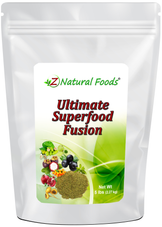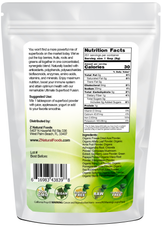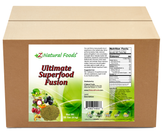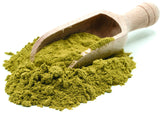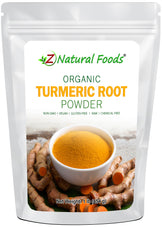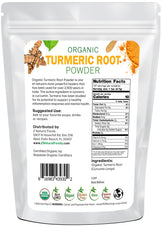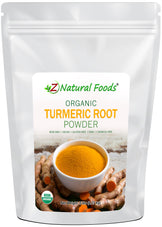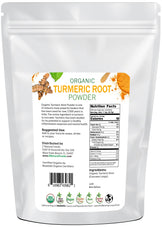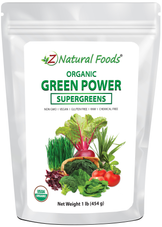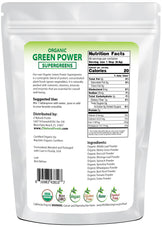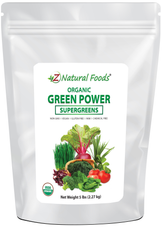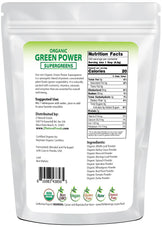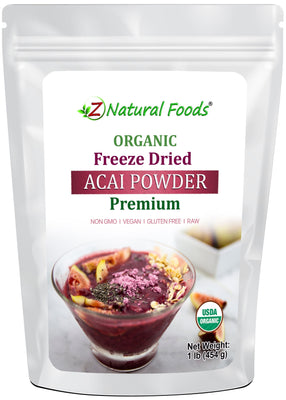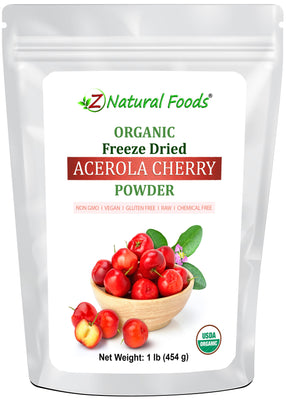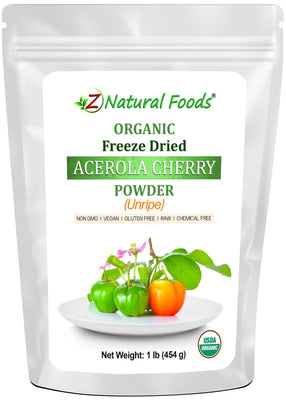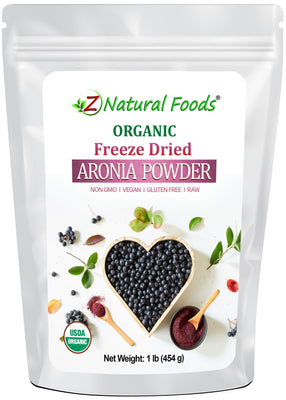About Product
Organic Freeze-Dried Goji Berry Powder is made from ripe goji berries that are gently freeze-dried to preserve their vibrant color and naturally sweet, tangy flavor. This fine powder blends easily into smoothies, juices, teas, and desserts, making it a versatile addition to a wide variety of recipes.
Convenient and shelf-stable, it can also be sprinkled over oatmeal, yogurt, or baked goods for a fruity boost. With its bright taste and rich color, goji berry powder is a simple way to enjoy this traditional berry in modern cooking.
Some research suggests that Goji berries may contain the following constituents:
- Minerals: Phosphorus, Zinc, Copper, Selenium
- Vitamins: Vitamin C, Thiamin, Riboflavin, Vitamin B-6, Vitamin A, Beta carotene, Vitamin E, Zeaxanthin & Lutine
- Amino Acids: Tryptophan, Threonine, Isoleucine, Leucine Lysine, Methionine, Cystine, Phenylalanine, Tyrosine, Valine, Arginine, Histidine, Alanine, Aspartic Acid, Glutamic Acid, Proline, Serine
- Essential Fatty Acids: Linoleic Acid, Alpha-Linolenic Acid
- Carotenoids: Beta Carotene, Zeaxanthin, Lutein, Lycopene, Cryptoxanthin, Xanthophyll
- Polysaccharides
- Monosaccharides
- Phytosterols: Beta-Sitosterol
- Phenols: Resveratrol
- Other Phytochemicals: Cyperone, Solavetivone, Physalin
Suggested Use: Mix one tablespoon with juice and yogurt or add to your favorite smoothie.
Mixing suggestions: To increase flavor and nutritional profile, combine our organic gelatinized maca root and organic extra-rich cacao powders in a smoothie.
Miscellaneous Facts about our Organic Freeze Dried Goji Berry Powder
Certifications: Certified USDA Organic.
Ingredients: Organic Raw Goji Berries.
Parts Used: Whole Goji berry.
Botanical Name: Lycium barbarum L.
Other Names: Wolfberry, Lycii Berry, pinyin, berry, Lycium Chinese, barbary matrimony vine, Duke of Argyll’s tea tree, Argyll’ sum, Murali, red medlar, Boxberry, Boxthorn, Gou qi, matrimony vine, Tibetan goji, Chinese wolfberry, Himalayan goji, Chinese Matrimony-vine.
Origin: Packaged with care in Florida, USA.
* Product packaging, pictures, and origin may vary.
Sources & References
Flint, Harrison Leigh (1997). "Lycium barbarum". Landscape plants for eastern North America: exclusive of Florida and the immediate Gulf Coast. Chichester: John Wiley & Sons. p. 326. ISBN 978-0-471-59919-7.
Huxley, A., ed. (1992). New RHS Dictionary of Gardening. Macmillan ISBN 0-333-47494-5.
"Scientific classification for Lycium barbarum L.". Natural Resources Conservation Service. US Department of Agriculture. Retrieved 13 April 2013.
"Lycium". MedlinePlus. US National Institutes of Health. January 2013. Retrieved 13 April 2013.
McNally A. Superfoods market set to double by 2011, NutraIngredients.com-Europe, October 8, 2007.
Runestad T. Functional Ingredients market overview, Functional Ingredients, October 2007.
Xinhua News Agency, Opening ceremonies of Ningxia wolfberry festival, August 3, 2005.
Staff reporter, Wolfberry festival to be held in Ningxia, China Daily, July 19, 2004.
Staff reporter, China's first provincial-level wolfberry association established, People's Daily Onlne, August 19, 2001.
Yunyun L. Dry no more. BeijingReview.com.cn, October 11, 2008.
1IA #99-08, Revision to Import Alert #99-08, "Detention Without Physical Examination of Processed Products for Pesticides"
Pathbreaking Newsletter Promotes Development of Organic Sector in China Lila Buckley. Worldwatch Institute. 28 February 2006.
GAIN Report #CH1072. Dueling Standards for Organic Foods 2001 Ralph Bean and Xiang Qing. USDA Global Agriculture Information Network Foreign Agricultural Service. 12 Dec 2001.
The Movement Toward Organic Herb Cultivation in China Subhuti Dharmananda. Institute for Traditional Medicine. January 2004.
[5] Staff Reporter. The commercial legend of goji. Selling a Chinese crop under the Tibetan flag. TibetInfoNet, July 29, 2007.
naturalnews.com/045205_goji_berries_superfruit_nutrients.html
altmedicine.about.com/od/completeazindex/a/goji.html
Department for Environment, Food and Rural Affairs, April, 2008. Prohibited Import of Goji Plants. April 30, 2008.
Boutin, N (July 30, 2008). "Fairground family first to gamble on gojis". Woodstock Sentinel Review. Sun Media. Retrieved 14 April 2013.
Karp, D (August 5, 2009). "Goji taunts North American farmers". Los Angeles Times - Food. LA Times. Retrieved 14 April 2013.
Amagase H, Nance DM (May 2008). "A randomized, double-blind, placebo-controlled, clinical study of the general effects of a standardized Lycium barbarum (Goji) Juice, GoChi". J Altern Complement Med 14 (4): 403"“12. doi:10.1089/acm.2008.0004. PMID 18447631.
Daniells S. (October 2008). "Questions raised over Goji science.". NutraIngredients.com-USA.
Wu SJ, Ng LT, Lin CC (December 2004). "Antioxidant activities of some common ingredients of traditional chinese medicine, Angelica sinensis, Lycium barbarum and Poria cocos". Phytother Res 18 (12): 1008"“12. doi:10.1002/ptr.1617. PMID 15742346.
Jia YX, Dong JW, Wu XX, Ma TM, Shi AY (June 1998). "[The effect of lycium barbarum polysaccharide on vascular tension in two-kidney, one clip model of hypertension]". Sheng Li Xue Bao (in Chinese) 50 (3): 309"“14. PMID 11324572.
Luo Q, Li Z, Huang X, Yan J, Zhang S, Cai YZ (July 2006). "Lycium barbarum polysaccharides: Protective effects against heat-induced damage of rat testes and H2O2-induced DNA damage in mouse testicular cells and beneficial effect on sexual behavior and reproductive function of hemicastrated rats". Life Sci. 79 (7): 613"“21. doi:10.1016/j.lfs.2006.02.012. PMID 16563441.
Cheng CY, Chung WY, Szeto YT, Benzie IF (January 2005). "Fasting plasma zeaxanthin response to Fructus barbarum L. (wolfberry; Kei Tze) in a food-based human supplementation trial". Br. J. Nutr. 93 (1): 123"“30. doi:10.1079/BJN20041284. PMID 15705234.
Chan HC, Chang RC, Koon-Ching Ip A, et al. (January 2007). "Neuroprotective effects of Lycium barbarum Lynn on protecting retinal ganglion cells in an ocular hypertension model of glaucoma". Exp. Neurol. 203 (1): 269"“73. doi:10.1016/j.expneurol.2006.05.031. PMID 17045262.
Yu MS, Leung SK, Lai SW, et al. (2005). "Neuroprotective effects of anti-aging oriental medicine Lycium barbarum against beta-amyloid peptide neurotoxicity". Exp. Gerontol. 40 (8"“9): 716"“27. doi:10.1016/j.exger.2005.06.010. PMID 16139464.
a b Gan L, Hua Zhang S, Liang Yang X, Bi Xu H (April 2004). "Immunomodulation and antitumor activity by a polysaccharide-protein complex from Lycium barbarum". Int. Immunopharmacol. 4 (4): 563"“9. doi:10.1016/j.intimp.2004.01.023. PMID 15099534.
He YL, Ying Y, Xu YL, Su JF, Luo H, Wang HF (September 2005). "[Effects of Lycium barbarum polysaccharide on tumor microenvironment T-lymphocyte subsets and dendritic cells in H22-bearing mice]". Zhong Xi Yi Jie He Xue Bao (in Chinese) 3 (5): 374"“7. doi:10.3736/jcim20050511. PMID 16159572.
31. Lee DG, Park Y, Kim MR, et al. (July 2004). "Anti-fungal effects of phenolic amides isolated from the root bark of Lycium chinense". Biotechnol. Lett. 26 (14): 1125"“30. doi:10.1023/B:BILE.0000035483.85790.f7. PMID 15266117.
Lee DG, Jung HJ, Woo ER (September 2005). "Antimicrobial property of (+)-lyoniresinol-3alpha-O-beta-D-glucopyranoside isolated from the root bark of Lycium chinense Miller against human pathogenic microorganisms". Arch. Pharm. Res. 28 (9): 1031"“6. doi:10.1007/BF02977397. PMID 16212233.
a b Lam AY, Elmer GW, Mohutsky MA (October 2001). "Possible interaction between warfarin and Lycium barbarum L". Ann Pharmacother 35 (10): 1199"“201. doi:10.1345/aph.1Z442. PMID 11675844.
Leung H, Hung A, Hui AC, Chan TY (May 2008). "Warfarin overdose due to the possible effects of Lycium barbarum L.". Food Chem. Toxicol. 46 (5): 1860"“2. doi:10.1016/j.fct.2008.01.008. PMID 18281140.
a b Adams, M; Wiedenmann, M; Tittel, G; Bauer, R. (September 2006). "HPLC-MS trace analysis of atropine in Lycium barbarum berries". Phytochem Anal 17 (5): 279"“83. doi:10.1002/pca.915. PMID 17019928.
Lam K-W, But P (1999). "The content of zeaxanthin in Gou Qi Zi, a potential health benefit to improve visual acuity". Food Chem. 67 (2): 173"“6. doi:10.1016/S0308-8146(99)00119-3.
Weller P, Breithaupt DE (November 2003). "Identification and quantification of zeaxanthin esters in plants using liquid chromatography-mass spectrometry". J. Agric. Food Chem. 51 (24): 7044"“9. doi:10.1021/jf034803s. PMID 14611169.
Peng Y, Ma C, Li Y, Leung KS, Jiang ZH, Zhao Z (December 2005). "Quantification of zeaxanthin dipalmitate and total carotenoids in Lycium fruits (Fructus Lycii)". Plant Foods Hum Nutr 60 (4): 161"“4. doi:10.1007/s11130-005-9550-5. PMID 16395626.
"Carotenoids Alpha-Carotene, Beta-Carotene, Beta-Cryptoxanthin, Lycopene, Lutein, and Zeaxanthin".
Li Z, Peng G, Zhang S (July 1998). "[Separation and determination of carotenoids in Fructus lycii by isocratic non-aqueous reversed-phase liquid chromatography]". Se Pu (in Chinese) 16 (4): 341"“3. PMID 11367765.
a b Li XM, Ma YL, Liu XJ (May 2007). "Effect of the Lycium barbarum polysaccharides on age-related oxidative stress in aged mice". J Ethnopharmacol 111 (3): 504"“11. doi:10.1016/j.jep.2006.12.024. PMID 17224253.
naturalnews.com/025907_berries_food_goji.html
Linus Pauling Institute, Micronutrient Information Center.
a b c "Goji Berries". UK Food Standards Agency, Novel Foods, Additives and Supplements Division. June 2007. Retrieved 13 April 2013.
Baltazar A (January 2010). "Raising the Bar (on Chocolate)". Nutraceuticals World. Rodman Media. Retrieved 13 April 2013.
ncbi.nlm.nih.gov/pubmed/22392549
lef.org/magazine/mag2007/jan2007_report_sod_01.htm
naturalnews.com/028098_goji_berries_antioxidants.html
ehow.com/about_4828895_goji-berry-juice-side-effects.html
CBC News cbc.ca/marketplace/2007/01/goji.html
Gan L, Wang J, Zhang S (November 2001). "[Inhibition the growth of human leukemia cells by Lycium barbarum polysaccharide]". Wei Sheng Yan Jiu (in Chinese) 30 (6): 333"“5. PMID 12561612.
Tang W, Hemm I, Bertram B (March 2003). "Recent development of antitumor agents from Chinese herbal medicines. Part II. High molecular compounds(3)". Planta Med. 69 (3): 193"“201. doi:10.1055/s-2003-38494. PMID 12677520.
Cao GW, Yang WG, Du P (November 1994). "[Observation of the effects of LAK/IL-2 therapy combining with Lycium barbarum polysaccharides in the treatment of 75 cancer patients (with abstract in English)]". Zhonghua Zhong Liu Za Zhi (in Chinese) 16 (6): 428"“31. PMID 7720497.
mdsupport.org/library/lutzean.html
US FDA, Letter to Healthsuperstore.com.
suboneyo.com/importance-of-trace-elements.html
United States District Court for the District of Arizona (May 29, 2009). "Class action lawsuit against FreeLife International, Inc.". Retrieved 2009-10-31.
nlm.nih.gov/medlineplus/ency/article/002222.htm
Amagase H, Nance DM. A randomized, double-blind, placebo-controlled, clinical study of the general effects of a standardized Lycium barbarum (goji) juice, GoChi'. J Altern Complement Med. 2008 May;14(4):403-12.
books.google.com/books?id=_pbKisojLNYC&pg=PA51&lpg=PA51&dq=constituents+goji&source=bl&ots=l0jL8XG8qM&sig=By8hppgLi_ruX6slHIr8w8-tvtw&hl=en&sa=X&ei=aAU5Vc6HC4uWNsDfgaAH&ved=0CDgQ6AEwBTgK#v=onepage&q=constituents%20goji&f=false* Reviews & Success Stories Disclaimer
Product reviews solely reflect the views and opinions expressed by the contributors and not those of Z Natural Foods. Z Natural Foods does not verify or endorse any claims made in these reviews. Statements have not been evaluated by the FDA and are not intended to diagnose, treat, cure, or prevent any disease or health condition.REFERRAL PROGRAM
Share your personal link to your friends and welcome them with rewards. Claim yours when they make their first purchase.

GIVE
$10 off discount

GET
$10 off discount
